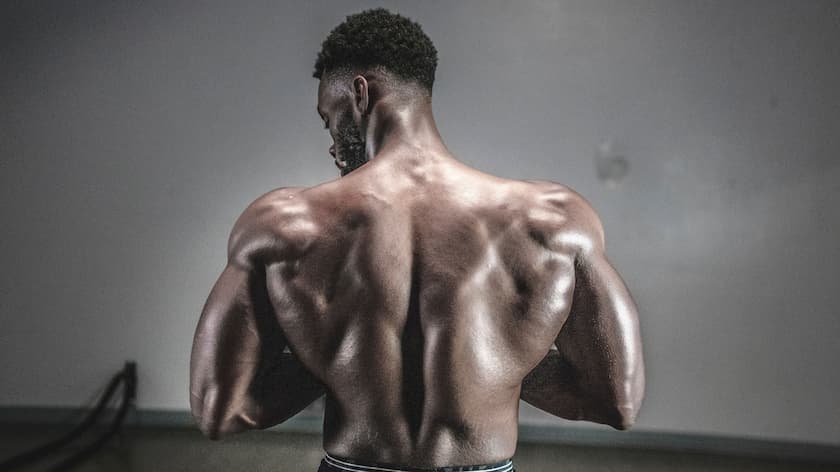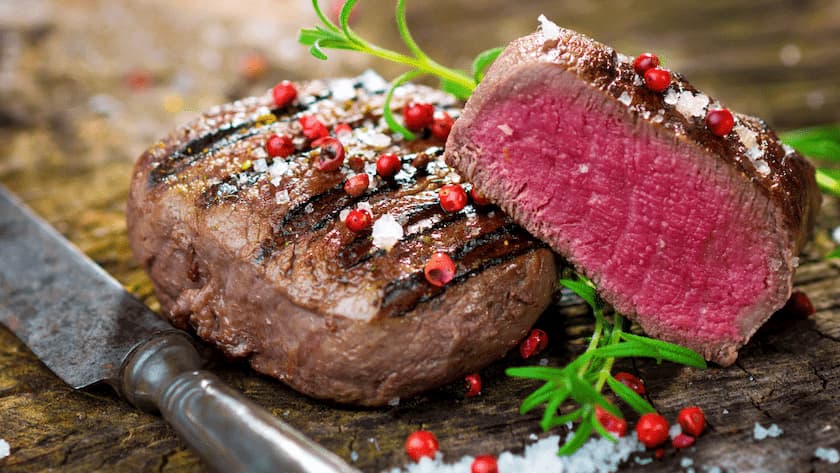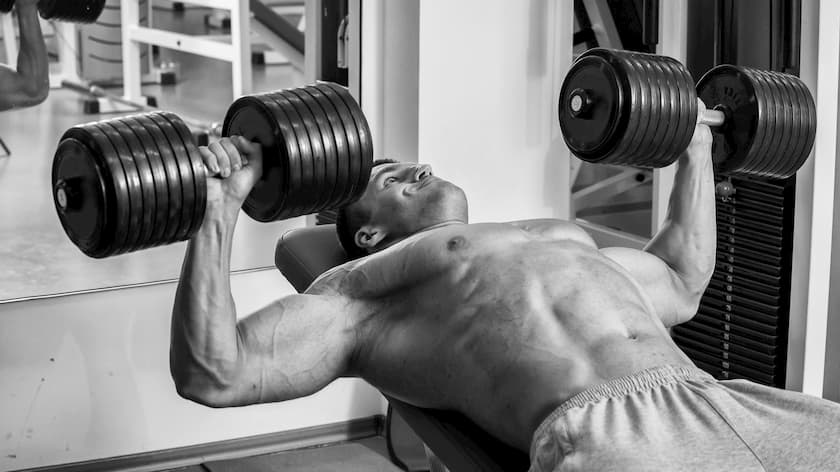When it comes to building an aesthetic physique, the area of the body that is often overlooked is the shoulders. Why are shoulders so important? One word: balance. Many beginners and veterans alike focus most of their effort on the top four areas: the legs, the arms, the chest, and the back. Now, these muscle groups should absolutely be the focus of your workout foundation; however, to form an evenly shaped physique and build maximum strength, you need to give attention to the rest of the muscle groups that are hungry for attention.
Why Train the Shoulders?
There are several key reasons why you should be working out your shoulder muscles. First and foremost is functionality. When someone says the word “shoulders,” they may not realize that they are referring to three separate heads of the muscle. You have your anterior deltoid (the front of the muscle), medial deltoid (the midsection of the muscle), and posterior deltoid (the back of the muscle).

Many shoulder routines lack variety and only develop the anterior deltoids via chest workouts. The anterior deltoid is a supporting muscle when the chest muscles are activated; it’s the reason that you can stabilize the bar as you move it through the motion of a chest press.
When one part of the shoulder muscle is dominating the other two, you’ll often see that muscle compensating for every upper body exercise. For instance, when the anterior deltoid is much stronger than the medial and posterior deltoid muscles, it will take over for the weaker two during exercises when the anterior deltoid has no place in the lift. This can become dangerous over time as an overworked muscle may lead to strain and injury.
Best of all, strengthening your shoulders will lead to an improvement in all other upper body exercises. Shoulders are stabilizing muscles. The stronger they become, the more you will excel in exercises like the deadlift, barbell hack squat, and overhead press.
Another terrific reason, and typically the one that grabs many people to begin weight training, is appearance. A well-formed set of boulder shoulders is the foundation of that V-taper that makes for a head-turning physique.

You could work on your latissimus dorsi and your waistline all day, every day, but without muscular shoulders, you just won’t have that fully developed V-taper that you’re after.
If you want jacked shoulders, you must focus on developing ALL three sections of the deltoid muscles.
Common Shoulder Training Mistakes
Although many people have the best intentions in mind when they train their shoulders, ultimately, one of the following mistakes may be made. The most common mistake is training the shoulder muscles with high repetition sets only.
Just because the shoulder muscle isn’t as big as the quadriceps, for instance, that doesn’t mean they won’t respond just as well when pushed to the limit. High repetition sets have their place in weight training, but if you want to add mass to your shoulders, then more volume is a requirement. We’ll delve more into this concept below.
The other mistake that is commonly made, again usually with the best intentions in mind, is that lifters will choose exercises that may not fully activate the shoulder muscle and/or may be dangerous for the ligaments.
For example, it is better to perform three different exercises, each isolating one head of the deltoids, than to engage in the Shoulder Windmill. This exercise, especially for those who have never performed it before, places your shoulder in a very compromising position, increasing the chances for injury.
Stick with proven shoulder training for huge delts and be sure to master the form before increasing the volume.
Lift Heavy for Serious Shoulder Gains
Many athletes over-complicate their training. One of the time-tested and proven strategies is to simply lift heavy on the most important exercises and focus on making small incremental improvements each workout. Your goal rep range should fall between 4 and 7 as opposed to the popular 12 to 15.
This means that you should use a weight that you can safely control through a complete range of motion for at least 4 repetitions and no more than 7 repetitions. If you find yourself being able to reach 10 repetitions, try increasing the weight by 1 to 5 pounds.
Take, for instance, the dumbbell shoulder press, which is one of the best mass building shoulder exercises used by athletes on every level. If you performed the dumbbell shoulder press with 55 lbs for 6 repetitions in your last workout, push yourself to do 7 repetitions with the same weight the next workout. Once you can comfortably achieve 7 full repetitions with 55 lbs, move up to 60 lbs and strive for 7 reps again.
This may sound simple, but it forces the muscles to respond, growing bigger and stronger. This is a principle that is extremely basic, but also extremely effective.
Track Your Workout for Success

In order to grow in size and strength, it’s going to be important to track your progress each and every workout. Shoulders are a stubborn muscle group, especially for the ectomorph body type, or those who tend to be much leaner and find it difficult to gain weight (hardgainers).
Through faithful tracking your progress, you will be able to emphasize progressive overload in your workouts effectively.
Mix Up Your Acute Variables
As with any muscle group, changing up your workout routine can be a great way to unleash powerful gains. Try to follow these three principles when planning your training regimen:
- Vary the exercises that you use to target each section of your shoulders. Aim to have 4-5 solid exercises that work the anterior, medial, and posterior deltoid then alter some of your exercises every 8 to 12 weeks, depending on your experience level. If you have been lifting for a long time, your body may require a change in the workout sooner rather than later.
- Vary your rep ranges every so often. However, as we mentioned above, focus mainly on heavy compound lifts. It won’t hurt to give your shoulders a new challenge by using high reps but do this to round off your workout. Don’t make it the emphasis! Heavy compound lifting should be the bulk of your training, rounded off with some volume and isolation movements. This is likely the opposite of what you’ve been told before, but give it a shot.
- Vary the rest time between sets. Try heavy sets with short rest times and low volume sets with longer rest times. The goal is to allow your body to replenish ATP stores so that you can perform more sets with greater efficiency. Give yourself 60 seconds to 120 seconds for rest, depending on the workout. Over time, your body will learn to become more efficient at energy utilization and replenishment.
The Best Exercises for Big Shoulders
1. Seated dumbbell shoulder press
- Holding a dumbbell in each hand, sit on a bench or chair
- Kick the dumbbells up to shoulder level, palm facing out
- Tighten your core and make sure your feet on placed firmly on the ground
- The dumbbells should be more towards the front of your body, not behind your head
- Push the dumbbells straight up
- Do not lock out the elbow
- Slowly, lower the dumbbells to the starting position
- Repeat
Recommended Workout:
- Sets: 4
- Reps: 4-8
- Rest Time: 60 seconds
2. Standing barbell military press
- Place a plate-loaded barbell at shoulder level in the rack
- Unrack the barbell
- Keep your head neutral
- Tighten your core
- Push the barbell above your head
- Slowly, bring the barbell down to the starting position at shoulder level
- Repeat
Recommended Workout:
- Sets: 4
- Reps: 5
- Rest Time: 75-120 seconds
3. Dumbbell lateral raises
- Holding a pair of dumbbells, stand up straight with a tight core
- Keep a slight bend in the elbow
- Looking straight ahead, slowly bring the dumbbells up on each side of your body
- Pause when you reach shoulder height
- Slowly lower the dumbbells to the starting position
- Repeat
Recommended Workout:
- Sets: 4
- Reps: 5-10
- Rest Time: 75 seconds
4. Dumbbell Arnold press
- Holding a pair of dumbbells in your hands, take a seat on a bench or chair
- Kick the dumbbells up to shoulder level, palms facing inward
- Slowly rotate the dumbbells up and above the head
- Twist halfway up so that your palms face outward
- Continue the movement by pressing the dumbbells fully above your head
- Reverse the movement, twisting the palms inward as you descend to the starting position
- Repeat
Recommended Workout:
- Sets: 4
- Reps: 5-10
- Rest Time: 60 seconds
5. Dumbbell shrugs
- Stand with a tight core and flat back, holding a pair of dumbbells
- Focus the movement in your traps (upper back) by allowing your traps to lift the weight
- Shrug your shoulders, moving the weight upward
- Pause at the top of the movement
- Slowly lower the weights to the starting position
- Repeat
Recommended Workout:
- Sets: 4
- Reps: 5-8
- Rest Time: 75 seconds
6. Seated dumbbell rear deltoid raise
- Sit on a bench or chair, holding a pair of dumbbells
- Tighten your core and keep your chest up
- Bend forward at the waist, keeping your gaze 5 to 10 feet in front of you
- Keep a slight bend in the elbows as you lift the dumbbells up and out to the sides
- You should feel the tension focused in the back of your shoulders as this is exclusively for the posterior deltoid muscle
- Slowly lower the weight to the starting position
- Repeat
Recommended Workout:
- Sets: 4
- Reps: 8
- Rest Time: 75 seconds




Leave a comment
All comments are moderated before being published.
This site is protected by hCaptcha and the hCaptcha Privacy Policy and Terms of Service apply.